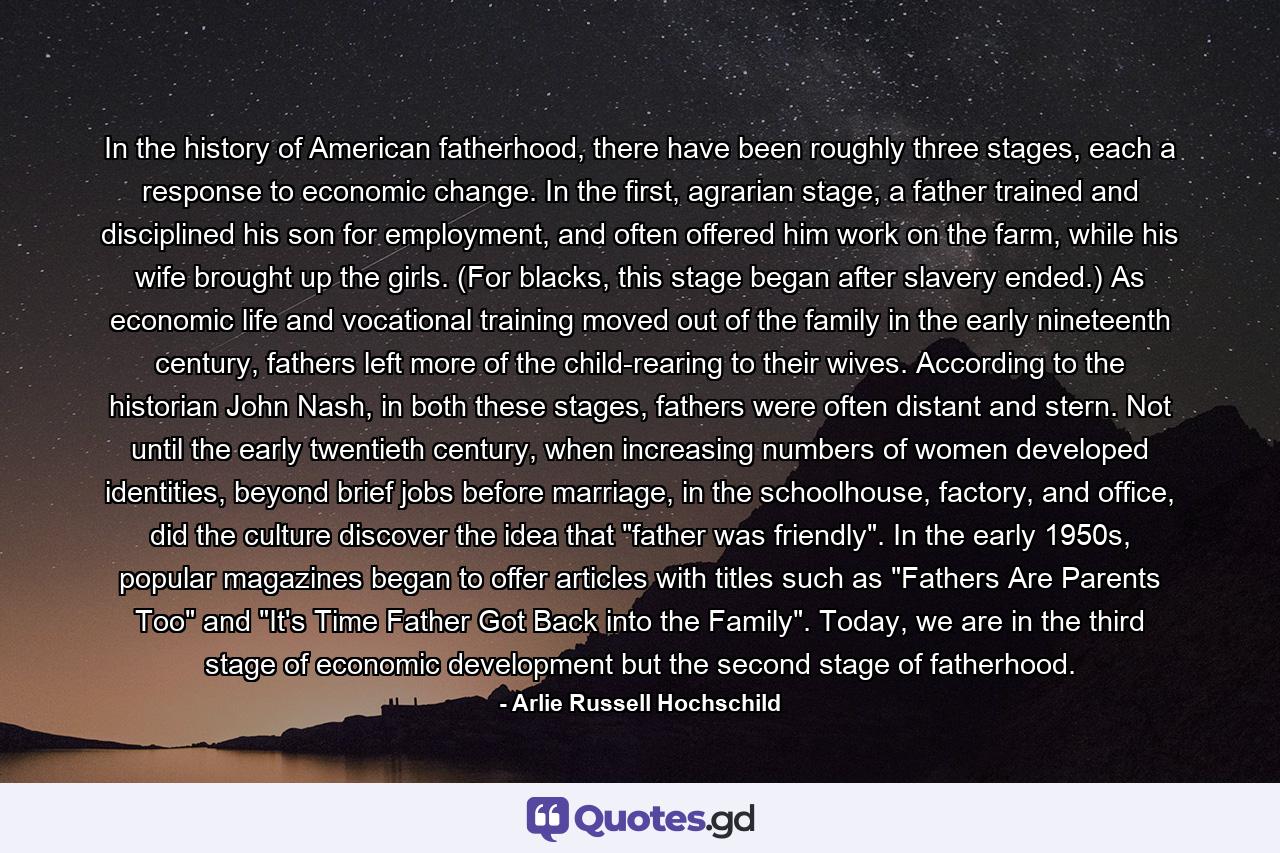In the history of American fatherhood, there have been roughly three stages, each a response to economic change. In the first, agrarian stage, a father trained and disciplined his son for employment, and often offered him work on the farm, while his wife brought up the girls. (For blacks, this stage began after slavery ended.) As economic life and vocational training moved out of the family in the early nineteenth century, fathers left more of the child-rearing to their wives. According to the historian John Nash, in both these stages, fathers were often distant and stern. Not until the early twentieth century, when increasing numbers of women developed identities, beyond brief jobs before marriage, in the schoolhouse, factory, and office, did the culture discover the idea that “father was friendly”. In the early 1950s, popular magazines began to offer articles with titles such as “Fathers Are Parents Too” and “It’s Time Father Got Back into the Family”. Today, we are in the third stage of economic development but the second stage of fatherhood.
